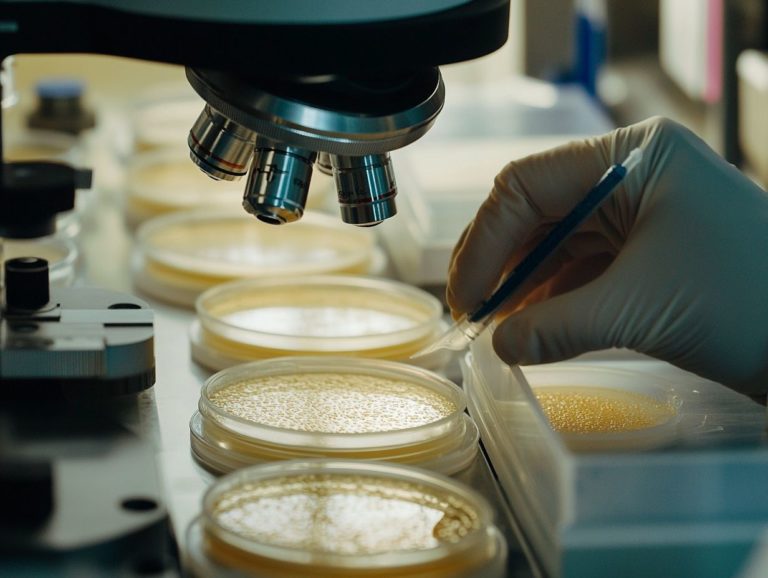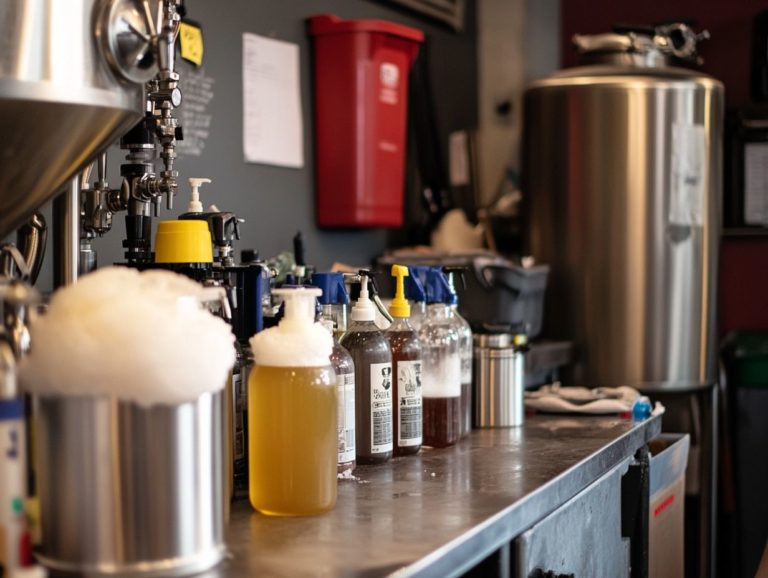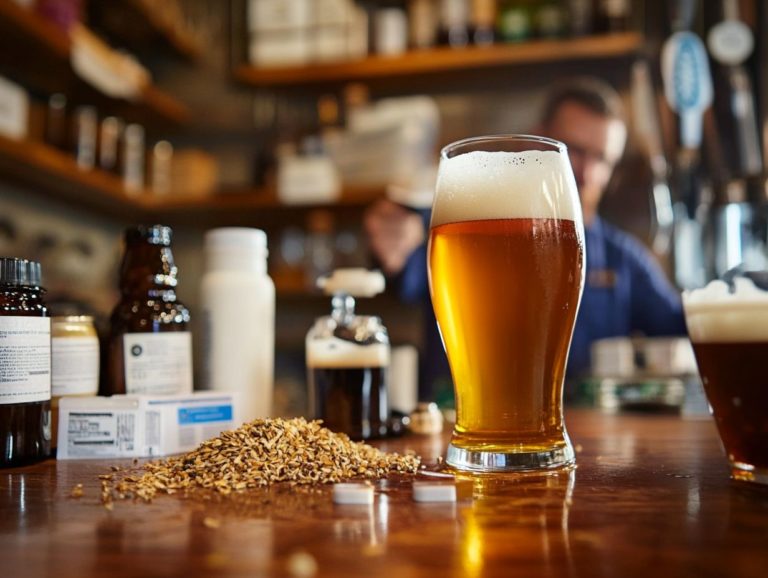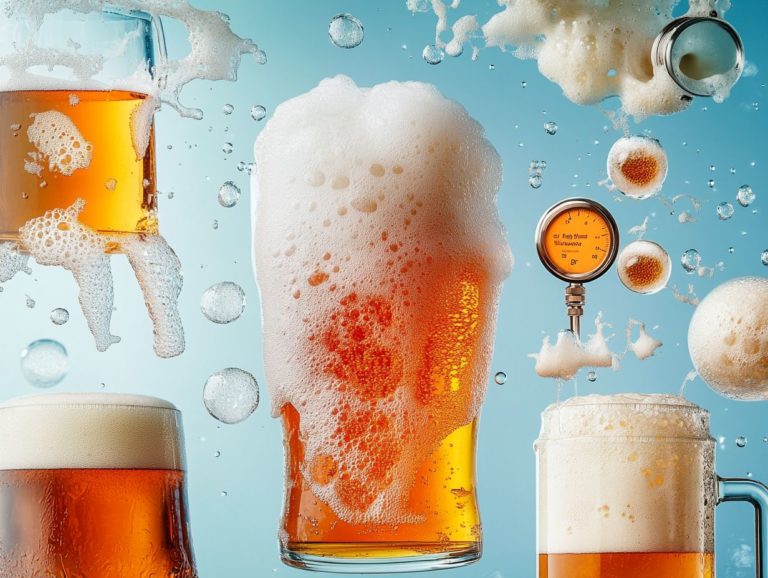5 Signs of Beer Fermentation Trouble
Contents
- Five Signs of Beer Fermentation Trouble
- Key Takeaways:
- 1. No Bubbling in the Airlock
- 2. Unusual Smells or Odors
- 3. Cloudy or Discolored Beer
- 4. Presence of Mold or Bacteria
- 5. Off Flavors in the Finished Beer
- How Long Should Beer Fermentation Take?
- What Are the Main Causes of Fermentation Trouble?
- How Can One Prevent Fermentation Troubles?
- What Are the Different Stages of Beer Fermentation?
- How Can One Troubleshoot Fermentation Issues?
- What Are the Common Mistakes Made During Beer Fermentation?
- Frequently Asked Questions
- What are the 5 signs of beer fermentation trouble?
- Why is a lack of airlock activity a sign of fermentation trouble?
- What types of odors are considered to be a sign of fermentation trouble?
- How can you tell if your fermentation is sluggish or stuck?
- What is the cause of a cloudy or hazy appearance in beer?
- Why is a sweet or overly bitter taste a sign of fermentation trouble?
Five Signs of Beer Fermentation Trouble
Homebrewing is a rewarding yet challenging journey, particularly during the beer brewing process. Fermentation is the pivotal stage that transforms your carefully chosen ingredients into exceptional beer.
However, things may not always unfold as you envisioned. Recognizing the early signs of fermentation trouble, such as yeast health issues or bacterial contamination, can mean the difference between a triumphant brew and a brewing disaster.
This article delves into five essential indicators that suggest something may be amiss during the fermentation process. We ll also provide valuable insights on troubleshooting common issues, preventing setbacks, and ensuring your beer emerges flawlessly every time.
Whether you are just starting or have honed your brewing skills over the years, grasping these signs will elevate your brewing experience and empower you to achieve exceptional beer quality and flavor.
Key Takeaways:
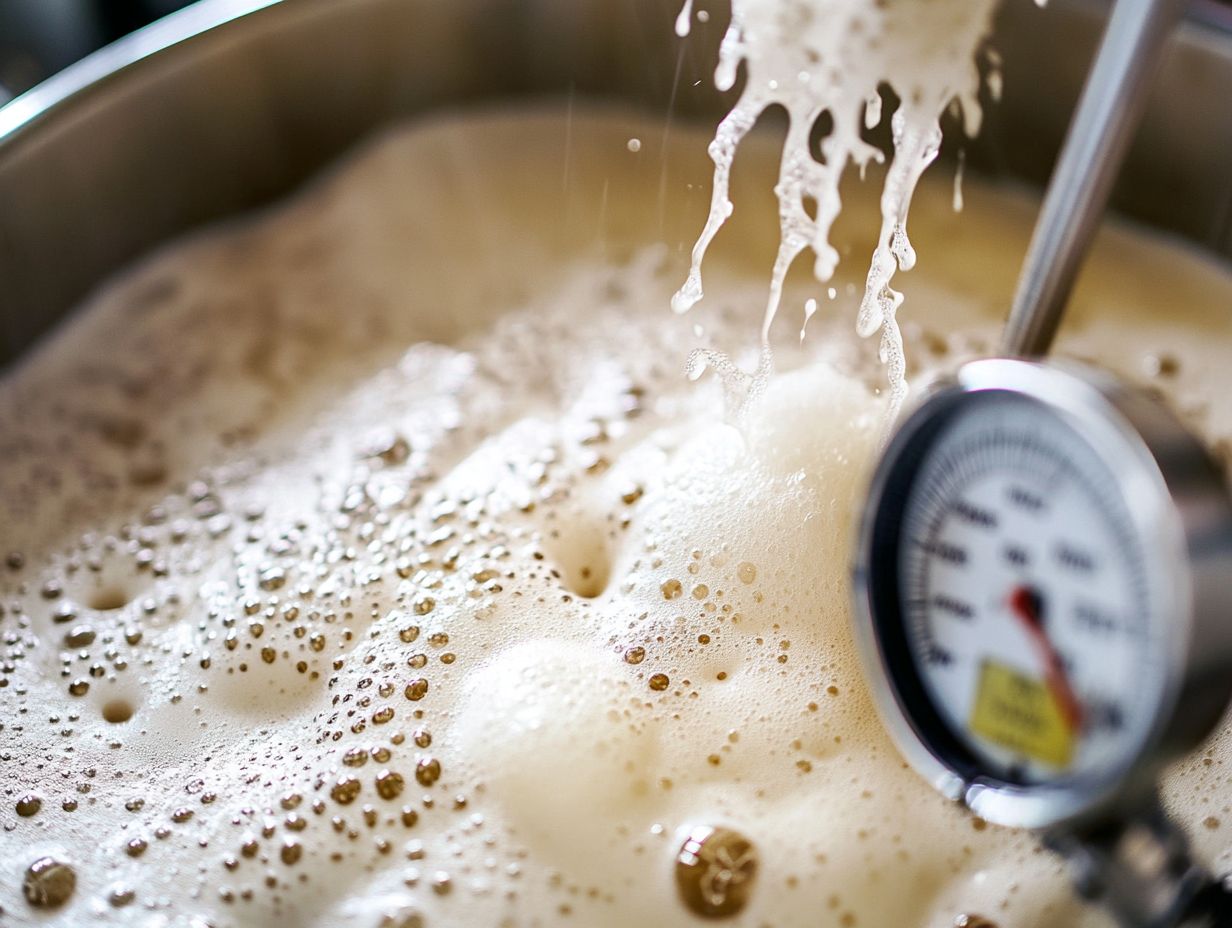
- No bubbles in the airlock can indicate a fermentation problem, possibly due to unsanitized brewing equipment or an unsealed fermentation bucket lid.
- Unusual smells or odors can be a sign of contaminated or spoiled beer.
- Cloudy or discolored beer may mean there is an issue with the fermentation process.
1. No Bubbling in the Airlock
When you re homebrewing beer, noticing a lack of bubbling in the airlock is a crucial sign that fermentation isn’t occurring as it should. This absence of activity might indicate issues like unsanitized brewing equipment or unhealthy yeast both essential for achieving perfect beer quality and beer aroma.
Keep an eye on airlock activity, as it serves as a reliable indicator of active fermentation. If you see no bubbling, it could mean your yeast is too weak to effectively convert sugars or that some unwelcome contamination has disrupted the process.
Maintaining the right fermentation temperature is essential. Extreme conditions can stress your yeast, halting fermentation and resulting in unpleasant off-flavors. By recognizing these factors, you can troubleshoot your batch and ensure that your brewing technique aligns with the delicate intricacies of fermentation science.
2. Unusual Smells or Odors
Unusual smells or odors during fermentation can signal serious beer faults, such as diacetyl, acetic acid, or oxidation. These can compromise the quality and aroma of your final brew. Encountering these off-putting aromas is a clear indication that your brewing practices need attention.
These aromas, which may evoke memories of butter or vinegar, can arise from specific yeast strains, temperature fluctuations, or unsanitary equipment. For example, diacetyl, produced during yeast metabolism, can impart an unwelcome buttery flavor that most brewers strive to avoid. Acetic acid may emerge from acetobacter, resulting in a vinegary scent that hints at hygiene issues. Oxidation can create a cardboard-like aroma that undermines your beer’s freshness.
To prevent these challenges, maintain proper fermentation temperatures, ensure cleanliness throughout the brewing process, and choose high-quality ingredients. Doing so will contribute to a more consistent and enjoyable final product that truly reflects your brewing skill.
3. Cloudy or Discolored Beer
Cloudy or discolored beer often signals contamination during the brewing process, directly impacting quality. This can stem from various factors, such as unsanitized brewing equipment, mishandled fermentation buckets, or even the selection of brewing ingredients.
Your brewing technique significantly influences the final appearance of your beer. For example, if you fail to cool the wort properly, proteins and polyphenols may react unfavorably, resulting in a cloudy brew.
Yeast selection and handling are equally crucial; certain yeast strains can introduce haze if not managed effectively. To prevent these complications, follow strict sanitation practices, ensure all equipment is thoroughly cleaned, and consider using fining agents or filtration methods to promote clarity before bottling.
By taking these essential steps, you enhance the aesthetic appeal of your beer and improve its overall flavor and stability.
In conclusion, by being vigilant about these signs of fermentation trouble, you can safeguard the quality of your homebrew. Don t miss out on these signs implement the tips we’ve outlined, and take your brewing skills to the next level!
4. Presence of Mold or Bacteria
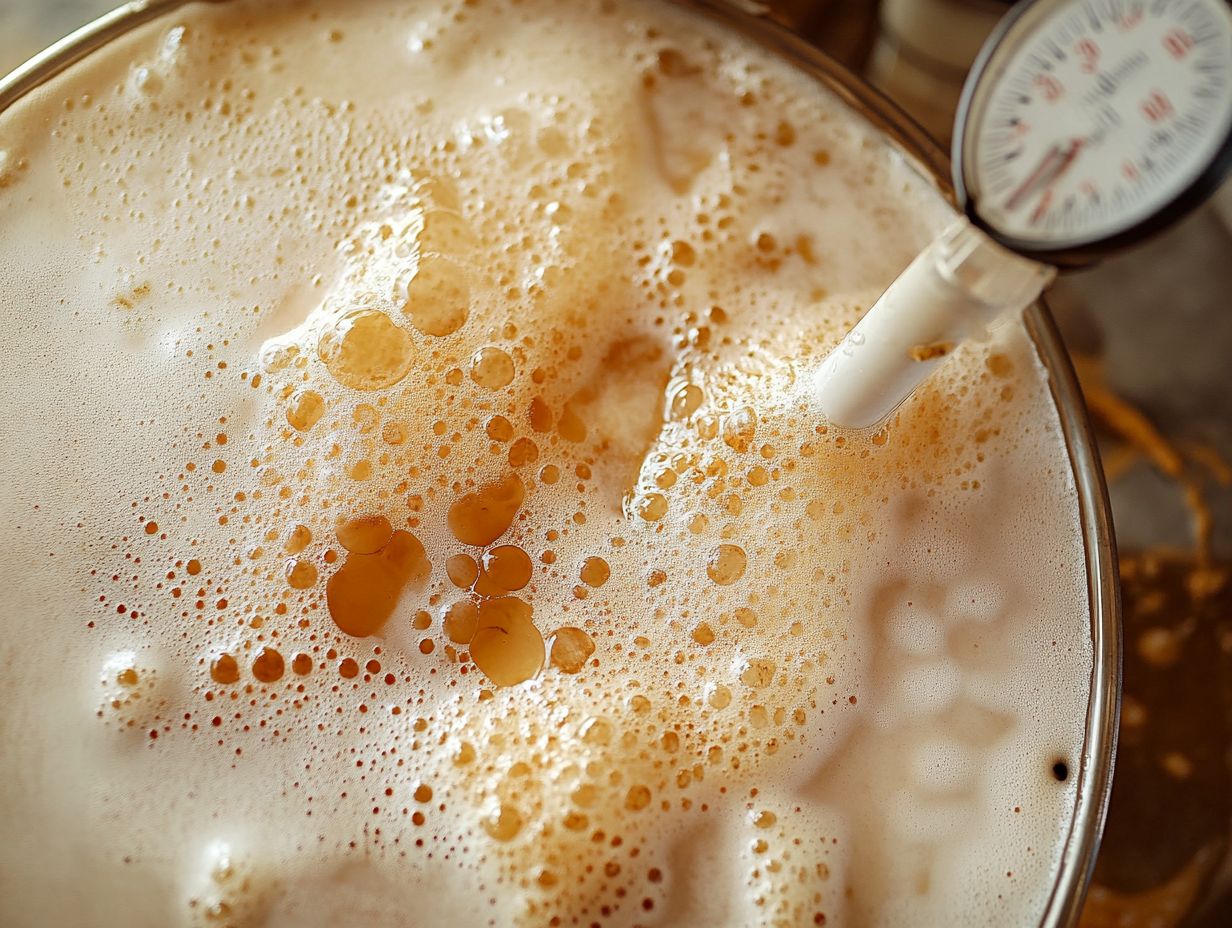
Mold or bacteria presence during brewing can introduce contamination issues. This significantly impacts beer quality and suggests that sanitation protocols haven t been diligently followed.
Unwelcome microorganisms, like wild yeasts and lactic acid bacteria (microbes that can produce lactic acid and sour flavors), can emerge from various sources, including unclean brewing environments, mishandling of ingredients, or even contaminated water. Their presence has the potential to disrupt fermentation, leading to off-flavors, unexpected sourness, or even a complete brew failure.
Embrace the art of brewing by committing to rigorous sanitation practices! This involves thoroughly cleaning and sterilizing all equipment, using food-safe sanitizers, and ensuring a controlled brewing environment. By maintaining vigilance in sanitation, you can craft high-quality, flavorful beers that are free from unwanted microbial interference. Act now to prevent these risks!
5. Off Flavors in the Finished Beer
Off flavors in your finished beer, like unwelcome hints of acetaldehyde or diacetyl, can reveal brewing missteps that occurred during fermentation. They can seriously detract from your overall enjoyment of the brew.
These undesirable flavors may arise from various issues, such as fluctuations in fermentation temperature, insufficient yeast health, or excessive exposure to oxygen. For example, acetaldehyde often sneaks in when yeast struggles to fully ferment sugars due to low fermentation temperatures, manifesting as a green apple-like aroma.
Diacetyl presents itself with a buttery flavor, typically arising when yeast is not adequately reintroduced at the end of fermentation, leaving behind its byproducts. To prevent such flavors from making an appearance, you need to pay meticulous attention to your brewing practices.
This means maintaining optimal fermentation temperatures, ensuring yeast health through proper oxygenation, and minimizing oxygen exposure throughout both the brewing and bottling processes. It s also crucial to remember that undercarbonation can lead to a flat beer, hiding flavors and aromas that could otherwise enhance your overall experience of the brew.
How Long Should Beer Fermentation Take?
The duration of beer fermentation can vary considerably, influenced by factors such as yeast health, brewing temperature, and the specific style of beer you’re crafting. Typically, fermentation lasts from several days to weeks, which is why it s essential for you to monitor gravity readings and fermentation signs carefully throughout the entire process.
For instance, lagers generally require longer fermentation periods because of their cooler brewing temperatures, often extending over several weeks. In contrast, ales can finish fermenting in as little as a week. Temperature control is crucial here; warmer conditions can accelerate fermentation, while cooler temperatures can slow it down.
As a homebrewer, closely observe gravity readings using a hydrometer or refractometer. These tools will indicate the sugar content and help you determine when fermentation is approaching completion. Look out for common signs of successful fermentation: steady bubbles in the airlock, a drop in gravity readings, and the formation of krausen (a frothy layer on top of the beer).
These indicators signal that the yeast is actively converting sugars into alcohol and carbon dioxide, bringing you one step closer to enjoying your brew. Implement these best practices and ensure your beer is properly carbonated when bottled!
What Are the Main Causes of Fermentation Trouble?
Several key factors can lead to fermentation challenges during your brewing process. These include poor yeast health, inadequate sanitation that invites contamination, and common brewing errors.
These disrupt the vital fermentation indicators you rely on to ensure a successful batch. Understanding these elements is crucial for any brewer aiming for consistent, high-quality results. Remember, yeast is the backbone of fermentation, responsible for converting sugars into alcohol and carbon dioxide. If your yeast isn’t thriving whether due to temperature fluctuations, nutrient deficiencies, or an outdated culture it may struggle to perform, resulting in off-flavors or stalled fermentation.
Don’t underestimate the importance of sanitation. Even a minuscule amount of wild yeast or bacteria can infiltrate your brew, leading to unwanted outcomes. Proper sanitation ensures that the beer flavor remains uncompromised.
To navigate these challenges successfully, maintain optimal fermentation temperatures, regularly check your yeast’s viability, and ensure all equipment is sterilized before use. This approach creates a healthy brewing environment that fosters successful fermentation, allowing you to craft exceptional beer. Engaging in a homebrew club or brewing education can also be beneficial for troubleshooting and improving your techniques.
How Can One Prevent Fermentation Troubles?
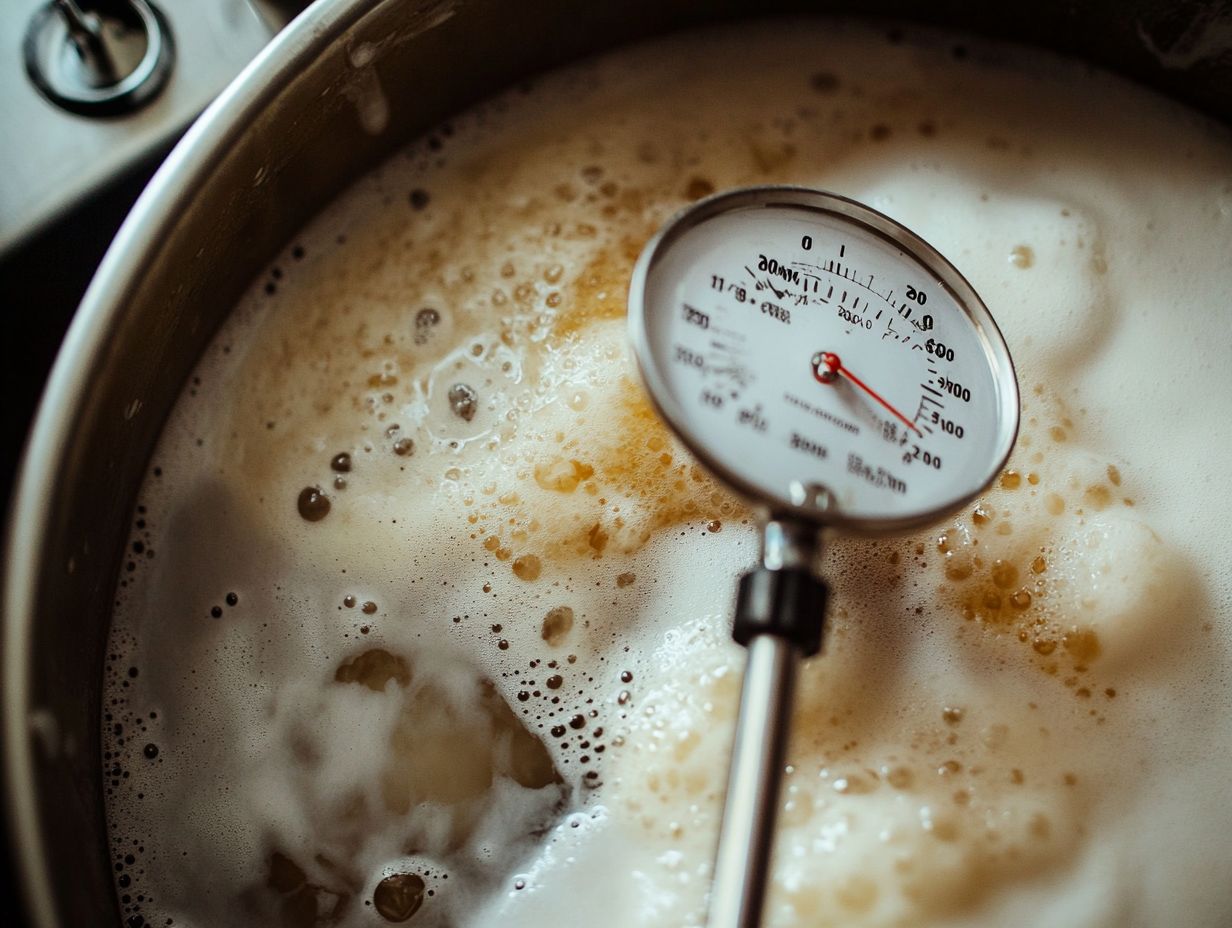
Prevention is better than cure. Consider learning from experienced brewers or joining a homebrew club for practical advice and tips.
Preventing fermentation troubles demands your unwavering attention to detail, including careful cleaning methods, crafting a yeast starter for optimal yeast health, and maintaining the perfect brewing temperatures to ensure a seamless fermentation process.
Each of these strategies is essential for enhancing the overall quality of your final brew. For example, rigorous sanitation significantly reduces the risk of unwanted bacteria and wild yeast that could compromise your batch, allowing only the intended yeast to flourish. Preparing a yeast starter gives you a healthy and active yeast population, crucial for vigorous fermentation and superior flavor development.
By controlling fermentation temperatures, you can sidestep off-flavors and stalled fermentation, leading to a more consistent and enjoyable product. Embrace these practices and watch your brewing skills soar! Enjoy the exceptional results of your hard work.
What Are the Different Stages of Beer Fermentation?
The fermentation process unfolds in several distinct stages, each marked by the unique activities of yeast, the evolution of flavors, and the critical role of temperature control in maximizing yeast vigor for a successful beer.
During the primary fermentation stage, yeast eagerly consumes the sugars from the wort, producing alcohol and carbon dioxide elements that significantly shape the beer’s initial flavor profile. As fermentation progresses, a variety of compounds are generated, adding complexity and character to your brew.
As you transition into the secondary fermentation phase, yeast activity typically slows down, providing an essential period for flavor maturation. This stage is crucial for clarifying your beer and enhancing its overall depth. By employing proper brewing techniques and meticulously monitoring temperature and time, you can foster robust yeast health, warding off off-flavors and cultivating a cleaner, more refined taste in your final product.
How Can One Troubleshoot Fermentation Issues?
Troubleshooting fermentation issues requires keen attention to the signs of fermentation and consistent gravity readings. A thorough understanding of potential beer faults that could arise from improper brewing temperatures or sanitation practices is also vital.
By adopting a systematic approach, you can effectively pinpoint the root causes of these challenges. Start with temperature control; maintaining a stable environment is essential. Extreme fluctuations can cause yeast stress or even stall fermentation altogether.
Regularly taking gravity readings keeps you informed about fermentation progress and helps identify any deviations from expected outcomes. Be vigilant for signs of contamination like off-odors or unusual flavors. Recognizing these indicators early on enables you to take corrective measures, ensuring that your final product aligns with your high-quality standards.
What Are the Common Mistakes Made During Beer Fermentation?
Common mistakes during beer fermentation often arise from overlooking yeast health, neglecting sanitation, and failing to monitor critical fermentation parameters. These oversights can lead to undesirable flavors and compromised beer quality.
Such missteps can manifest as off-flavors, less fizz, or even complete fermentation failures. Make sure your yeast is healthy it s the key to great beer! Use fresh, high-quality strains and ensure they are pitched at the ideal temperature.
Cleanliness is crucial in brewing; any contaminants introduced during the process can ruin the final product. Consistently monitor specific gravity (the measure of sugar concentration in the beer) and temperature, as even slight fluctuations can significantly impact fermentation outcomes.
By focusing on these details, you can elevate your brewing technique and create a flavorful, high-quality beer that impresses.
Frequently Asked Questions
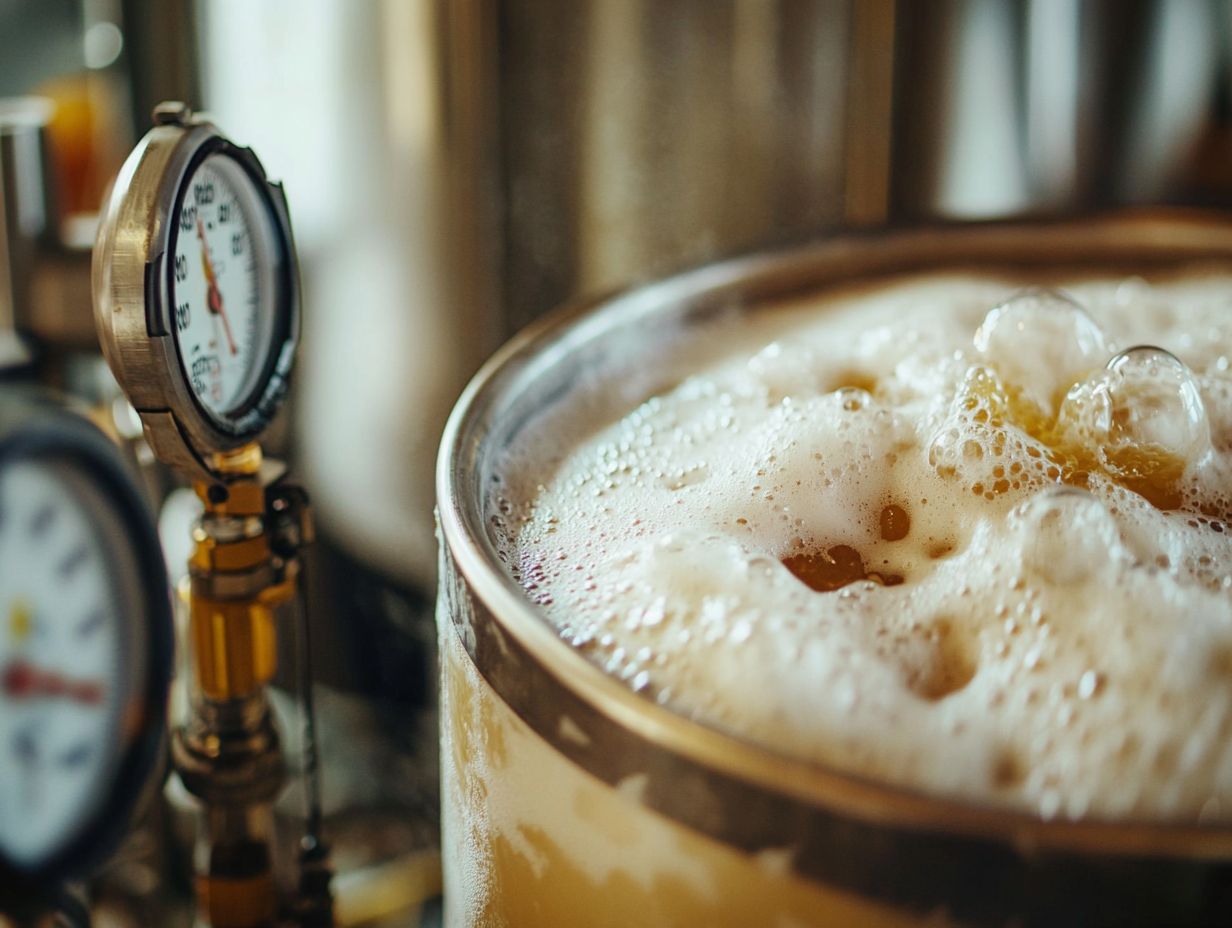
What are the 5 signs of beer fermentation trouble?
- A lack of airlock activity
- A foul or off-putting odor
- A sluggish or stuck fermentation
- A cloudy or hazy appearance
- A sweet or overly bitter taste
Why is a lack of airlock activity a sign of fermentation trouble?
When yeast is actively fermenting, it produces carbon dioxide gas, causing the airlock to bubble. If there is no airlock activity, it may mean that the yeast is not working properly or that there is an issue with the brewing environment.
What types of odors are considered to be a sign of fermentation trouble?
A strong sulfur or rotten egg smell, a strong acetone or nail polish remover smell, or a moldy or musty smell are all indicators of fermentation trouble. These odors can result from undesirable byproducts produced by the yeast or contamination from bacteria or wild yeast.
How can you tell if your fermentation is sluggish or stuck?
If your beer has been fermenting for a few days with little to no airlock activity or a thick layer of foam on top, it could be a sign of a sluggish or stuck fermentation. A stuck fermentation occurs when the yeast can t continue converting sugar into alcohol, resulting in a sweet-tasting beer.
What is the cause of a cloudy or hazy appearance in beer?
A cloudy or hazy appearance in beer can indicate fermentation trouble. This could be due to wild yeast or bacteria, a protein haze from incomplete fermentation, or a bacterial infection. Addressing this issue is important as it can affect the flavor and stability of the beer.
Why is a sweet or overly bitter taste a sign of fermentation trouble?
If your beer has a sweet or overly bitter taste, it could signal fermentation trouble. A sweet taste can indicate that the yeast hasn t fully fermented all of the sugar, while an overly bitter taste may point to contamination by wild yeast or bacteria. Both issues can result in off-flavors and a potentially undrinkable beer.

